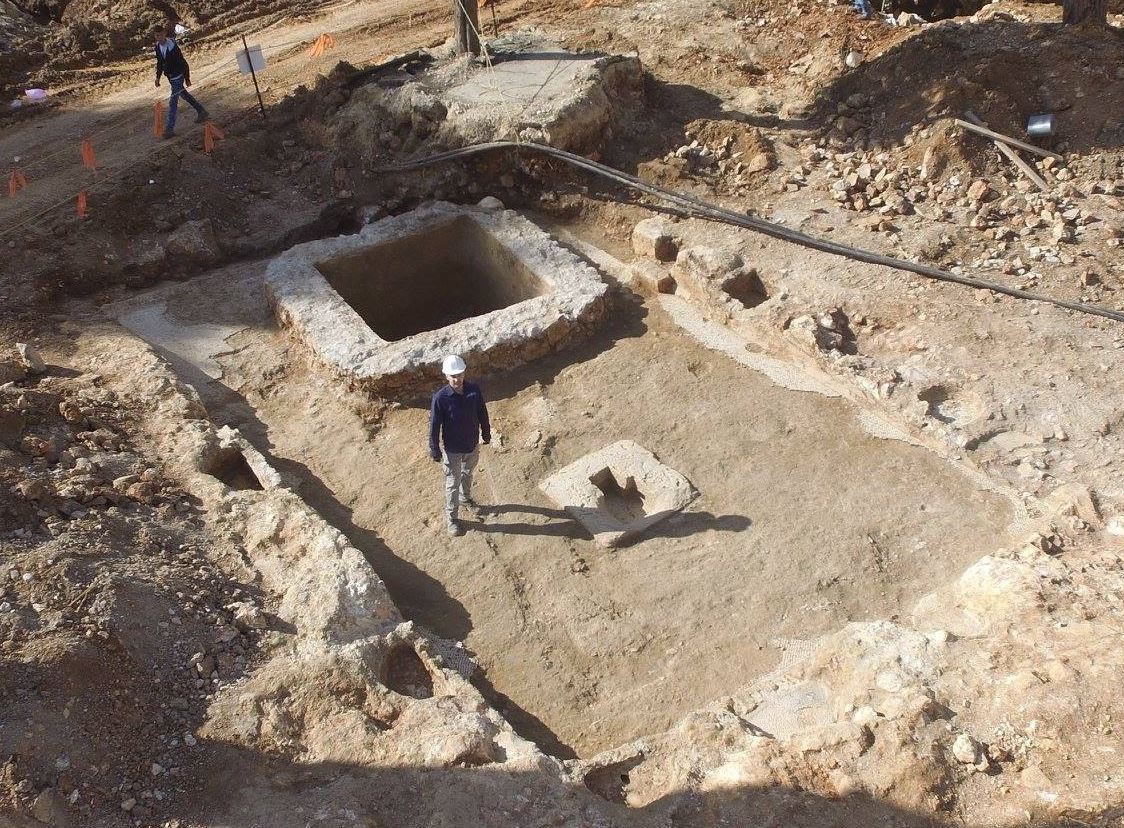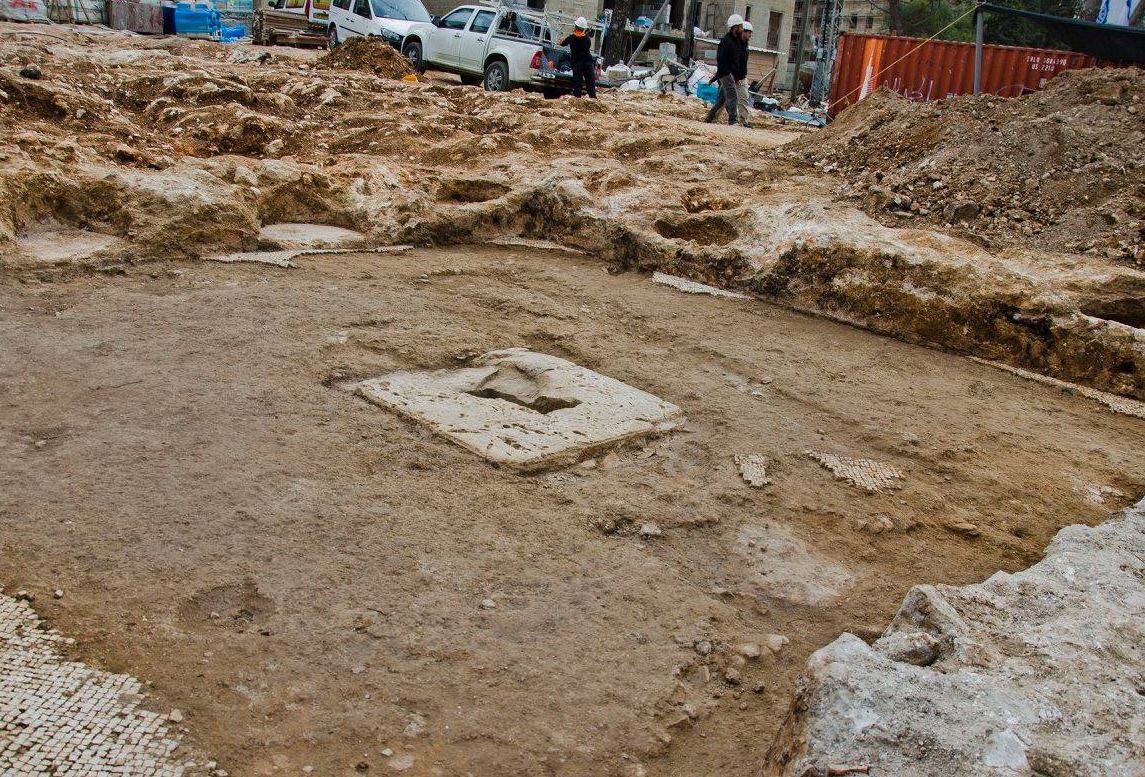Ancient Roman 'leisure complex' including bathhouse and private wine press unearthed in Jerusalem
Archaeologists say the complex is around 1,600 years old

An ancient Roman estate complete with its own wine press and bathhouse has been unearthed in Jerusalem.
A series of buildings dating back at least 1,600 years were discovered underneath the city's famous Schneller Orphanage which operated on the site from 1860 until the end of the Second World War, when it was turned into an army base.
The ruins were discovered by archaeologists from the Israel Antiquities Authority who were excavating the site ahead of building new flats for the city's Orthodox Jewish community.
The wine press - at the centre of the complex - had a pressing surface paved with white mosaic tile.
In a pit at the centre of the press there were screws which would have extracted juice from the grapes before storing them in eight cells along the walls.
Archaeologists believe the complex dates back from the late Roman or early Byzantine period in around 400AD.
Some bricks were stamped with the insignia of the Tenth Roman Legion, which was garrisoned in the province from its conquest in 70AD until 300AD, during which time it was called Judea.
Amit Re'em, the Jerusalem district archaeologist, said: “We found a unique bath house with special ceramic pipes.
“Inside pipes, hot air was flowing to warm up the place where people were taking baths - it's absolutely beautiful."
Alongside the Roman house, archaeologists also found evidence of a second, much older, Jewish home on the site, built during what is known as the Second Temple period - 538BC to 70AD.
Near the Roman bathhouse they found a pit they think could have been used as a ritual bath - known as a Mikye - during that period.

Mr Re’em said: “Everything is evidence that nearly 2,000 years ago the Romans arrived in Jerusalem and after the destruction of the city in 70AD, the soldiers occupied this house and we find archaeological evidence from this period.
“This is the magic of Jerusalem - everything is layers upon layers in once place.”
Excavation director Alex Wiegmann said "Once again, Jerusalem demonstrates that wherever one turns over a stone ancient artifacts will be found related to the city’s glorious past. The archaeological finds discovered here help paint a living, vibrant and dynamic picture of Jerusalem as it was in ancient times up until the modern era."
Join our commenting forum
Join thought-provoking conversations, follow other Independent readers and see their replies
Comments